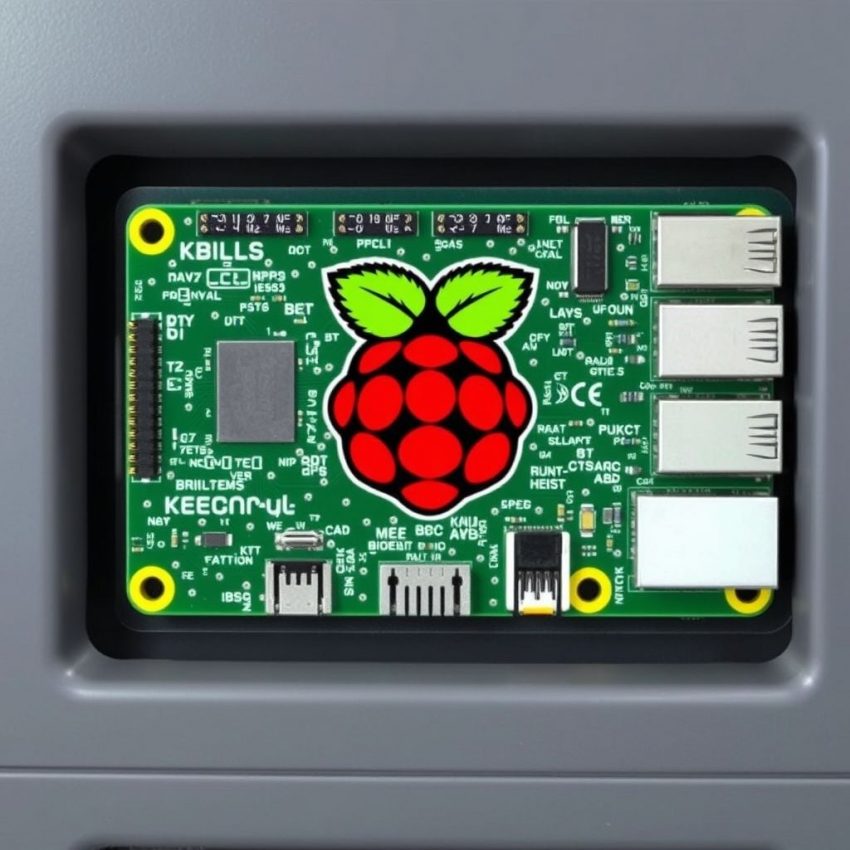ATM Hackers Get Raspberry Pi-ed: Unexpected Tech in a Bank Robbery Attempt
The world of cybercrime is constantly evolving, and criminals are always looking for new and inventive ways to exploit vulnerabilities. Recently, law enforcement uncovered a surprisingly low-tech, yet surprisingly effective, attempt to hack ATMs using a device most hobbyists would recognize: a Raspberry Pi. Yes, that tiny, affordable computer board, typically used for home projects and education, was at the heart of a sophisticated ATM heist attempt. And the twist? A 4G modem was involved.
The story highlights the ingenuity (or perhaps desperation) of modern criminals. Instead of relying on complex malware or sophisticated network intrusions, this group opted for a more direct approach. Investigators believe the Raspberry Pi, equipped with a 4G modem, was used to communicate with the ATM. The setup likely involved a custom-built piece of software that interacted with the ATM's internal systems, potentially attempting to bypass security protocols and dispense cash.
How did they do it?
While the specifics of the attack haven't been fully released to the public for security reasons, the general modus operandi is clear. The 4G modem allowed the Raspberry Pi to connect to the internet, independent of the ATM's internal network. This bypasses many traditional security measures designed to protect ATMs from remote access. The Raspberry Pi, acting as a bridge, likely communicated commands to the ATM, potentially manipulating its internal functions to dispense cash.
The relatively low-cost and readily available nature of the components makes this approach particularly troubling. A Raspberry Pi and a 4G modem can be purchased for a fraction of the cost of more sophisticated hacking tools. This accessibility lowers the barrier to entry for aspiring criminals, potentially leading to an increase in similar attacks.
What can we learn?
This incident serves as a reminder that criminals are constantly adapting their tactics. While high-tech solutions are often in the spotlight, simpler, more accessible methods can be just as effective. This case underscores the importance of:
- Robust ATM security: Banks and financial institutions need to continue investing in and updating their ATM security systems. This includes both software and hardware security measures, as well as regular security audits and updates.
- Network security: Protecting ATMs from unauthorized network access is crucial. Strong firewalls and intrusion detection systems are essential.
- Physical security: While this attack focused on the network, strong physical security measures like robust casings and surveillance systems remain vital deterrents.
The unexpected use of a Raspberry Pi and 4G modem in this ATM hacking attempt highlights the adaptability and resourcefulness of cybercriminals. This incident underscores the need for a multi-layered approach to ATM security, encompassing both digital and physical protection. The quiet hum of a Raspberry Pi might seem harmless, but in the wrong hands, it can become a powerful tool for illicit activities. The future of cybersecurity requires vigilance and innovation to stay ahead of these evolving threats.
Don’t miss out on this exclusive deal, specially curated for our readers! Unlock the power of advanced crypto trading with Bitfinex
This page includes affiliate links. If you make a qualifying purchase through these links, I may earn a commission at no extra cost to you. For more details, please refer to the disclaimer page. disclaimer page.

